How They’re Built & What They’re Made Of
If you got the chance to catch the recent Star Wars flick, then you might be wondering if it’s possible to build a Star Destroyer. In the Star Wars films, Star Destroyers are some of the essential ships during the plot. The Imperial-class Star Destroyer is the typical starship we’re used to seeing in the movies, and the brilliant concept of the Star Destroyer has risen to near mythical levels, leaving many to wonder if our ever-increasing demand over technology will ever allow us to build one.

What is a Star Destroyer, can we possibly make one, and what would it cost to build a Star Destroyer? A Star Destroyer is the fictional ship we see dominating the universe in the Star Wars movies. Someday, we may be able to make a Star Destroyer, but currently, it would cost about $636 billion to build the ship and $44.4 trillion to get it off Earth and headed toward Mars. So it’s too expensive of a concept for most to consider nowadays.
Since there isn’t a lot of information available on the Internet today about the possibility of making a Star Destroyer and what it might cost to make one, we created this article to help you out. Below we’ll discuss what a Star Destroyer is and what it might cost to make one in today’s world.
The Intro Breakdown
Whether you are a fan of the Star Wars films or not, just about everybody knows the appearance of the iconic Star Destroyer. In the Star Wars movies, the Star Destroyer is the most commonly used ship in the Imperial fleet. We find Star Destroyer ships in all different types of Star Wars stories, including movies, television series, books, video games, and comic strips.
Star Destroyers are mighty ships, and although they cost an astronomical amount of money to make, we continuously see them appearing throughout the Star Wars films. Not surprisingly, in the Galactic Empire, we see many governments dumping all of their money into creating such a starship. That’s because owning just one Star Destroyer allows people to obtain a foothold in the galaxy for the Empire.
Star Destroyers are so expensive because they offer several features. First, you can individually deploy a Star Destroyer as either a forward operating base for troops and supplies or use it as a mobile weapon platform that can help guard and protect certain vital areas. Star Destroyers are typically armed with batteries of turbolasers and other plenty of firepower and can take out complete planetary systems, as well as take out rebel fleets with ease. Outside of the Imperial-class of Star Destroyers, there are plenty of other categories of Star Destroyers you’ll notice around the Empire. Many of the different types of Star Destroyers in the Star Wars films have been adapted for a wide variety of uses.
Also, because of the ongoing success of the Star Wars movies, generations of people have seen plenty of different kinds of Star Destroyer models and toys hitting the shelves since the advent of the franchise’s success. If you think back to the beauty of the Imperial Star Destroyer’s first appearance in the 1977 movie Star Wars, when the ship chases after a Corellian Corvette, it has long been considered a supreme artistic achievement in the film and special effects world.
How Big is a Star Destroyer?
As the concept of a Star Destroyer took place over the draft scripts of the film Star Wars, we saw the idea of a Star Destroyer evolve several times. In the film’s first drafts, we see the word “ stardestoyer ” used to label two-person fighters usually used by the Galactic Empire. However, by the time of the film’s second draft, the “Star destroyer” concept had evolved, and we see four Star Destroyers pursuing one Rebel x-wings at one point during the draft.
So, what happened to the scene with four Star Destroyers pursuing one Rebel ship?
Once George Lucas began doing a bit of research into what it would cost to build a Star Destroyer, and Industrial Light & Magic (ILM) began incurring the costs for building four of these ships, something had to give. Because of how much it would cost to have more than one Star Destroyer present for the film, Lucas decided to create one colossal Star Destroyer instead of the four he had planned to use in the second draft.
ILM’s Star Destroyer Model
To accommodate the vision that Lucas had, ILM wound up creating the first Star Destroyer model. It was 91-centimeters and about half the size of the ship the Star Destroyer is chasing in the scene. Once that scene was complete, Lucas wanted a more massive Star Destroyer model. While that didn’t happen because of budget constraints, ILM did manage to build more hull details into the Star Destroyer model. The 13-second chase scene wound up being ILM’s first special effects piece, and it was a huge success.
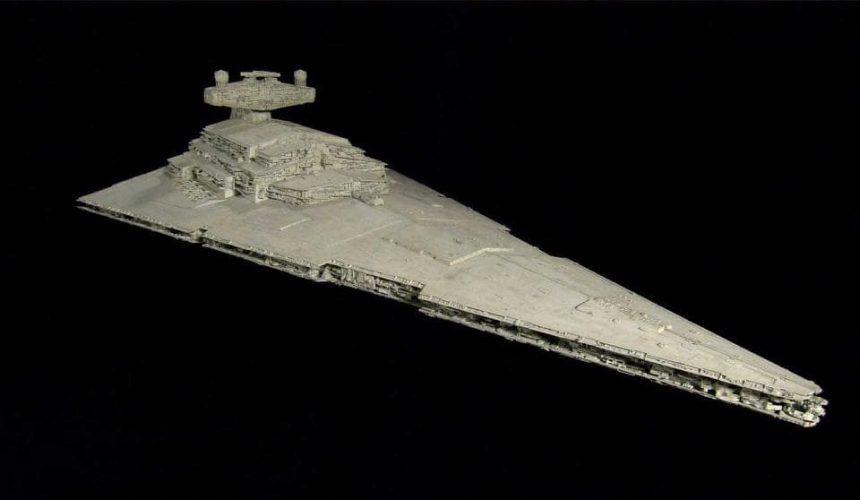
As the success of each Star Wars film started to eclipse the one before it, ILM decided it was time for a better Star Destroyer model once Lucas wanted to make his second installment of the original trilogy, The Empire Strikes Back (1980). While Lucas was working on the production of this second film, he decided that he wanted to open every Star Wars film in space with a Star Destroyer flying past.
We also see another class of Star Destroyers in the 1980 film, The Empire Strikes Back. Lucas introduces his audience to the “Super Star Destroyer” or Executor-class of Star Destroyers. These ships are also called “Star Deadnought,” as well as “Star Dreadnaught.” In the 1980 film, The Empire Strikes Back, and the 1983 film Return of the Jedi, the Star Destroyer shooting model that was used in both films, measured 282 centimeters long.
Design Evolution Through the Ages
As more and more Star Wars films were created and the decades passed, we saw evolution in the Star Destroyers and their classes. In the 2005 movie Revenge of the Sith, we see the Venator-Class star destroyer. In the 2002 movie Attack of the Clones, we see Acclamator-class transports as well as Imperial-class Star Destroyers from the imperial navy, which are the same types of vessels we had in the original trilogy.

We have several different types of Star Destroyers the deeper into the films we get. If you were wondering the difference between Imperial I-class Star Destroyers and Imperial-II class Star Destroyers, we’ve got a simple solution for that issue, too. If you look at Solo, Rogue One, and A New Hope, you’ll see that the Imperial-I class Star Destroyers used in that movie are white.
On the other hand, in The Empire Strikes Back and Return of the Jedi, the Imperial-II class Star Destroyers you see in those films are grey. So, looking for the color variation is one way to tell the different types of Star Destroyers apart.
According to Popular Mechanics, the triangular shape we see with the Star Destroyer’s development would never work in space physics. The truth is that the design of the Star Destroyer would only work in a planetary atmosphere like what you get in Rogue One. However, most Star Wars fans already know that Star Wars never used a real 3D environment when it comes to space battles.
So, even if you were to design a Star Destroyer like what you’ve seen in the various Star Wars movies, it wouldn’t fly in space or do the job you’d expect it to do. However, the beauty of the Star Destroyer’s design has more to do with its creation and imaginative properties and how it made the viewer feel. Nobody can deny that the idea behind the Star Destroyer is now iconic design, and there is a lot of brilliance behind that idea.
Building the Different Star Destroyers
As we already mentioned above how the designs behind Star Destroyers has continued to evolve as different Star Wars films were released over the years. If you’re familiar with the Star Wars films, then you know the first time we see the symbolic Imperial Star Destroyer is during the opening scene in Star Wars. When Star Wars first opens, we find ourselves watching
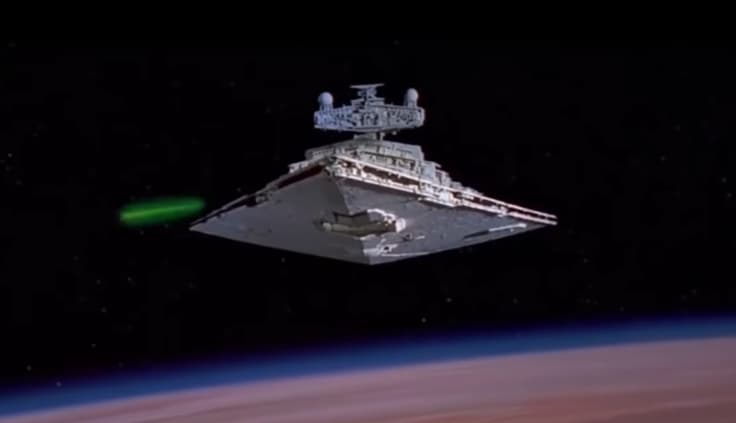
If you think back to this famous scene, then you’ll remember just how substantial the size of
What Makes Up the Different Classes?
As far as Star Destroyers that are in the Imperial II subclass, we see these ships most often in the opening scenes of both The Empire Strikes Back and Return of the Jedi. When we take a look at the Imperial II and compare it to the Imperial I, you’ll see there are several differences, some of which are cosmetic and others that are functional.
By the time we get to The Empire Strikes Back, fans learn that many of the Imperial I Star Destroyers, including the Devastator, are still around during the plot of the second film. However, many of the Imperial I ships were retrofitted so that they look more like the Imperial II ships, which can sometimes make it more difficult for fans to tell the two types of ships apart.
Also, in The Empire Strikes Back, we are introduced to a more massive, more intimidating “Super Star Destroyer.” This ship is the Executor-class Star Dreadnought Executor, which is known as the leading ship of the “Death Squadron.” This particular ship is commanded by Admiral Firmus Piett and operates as
By the time we’ve reached Return of the Jedi, we see that
Variations in Designs and Models
As the Star Wars franchise continued its popularity and the demand for more films continued, we start to see other changes in Star Destroyer models. We especially see plenty of changes in the Star Wars prequel films. If you consider the break between the original trilogy and the prequel films of the 2000s, then it becomes a bit more obvious why we’d see these variations: time has passed. Style expectations had changed, and technology had allowed for special effects to come a long way.
Since there was a lot more technology readily available for the creation of the Star Wars prequel films, we’d expect to see some changes and variations in the Star Destroyers we see. We’ll break down some of the differences in Star Destroyer models we see in those prequel films below.
- If you think back to the ending scenes of Attack of the Clones, when clone troopers are placed into Acclamator-class Republic ships that look a lot like Star Destroyers, then we might be able to think of the Acclamator as a precursor to the Star Destroyers.
- Throughout the film Revenge of the Sith, and also in The Clone Wars, we see the introduction of the Venator-class of Star Destroyers. You can usually tell that a ship is a Venator-class ship in the Star Wars films because they are usually red and gray, much like the Republic’s colors. We do see them change colors as we get to the final scenes of the Revenge of the Sith. In those last few scenes, we see Venators are now a plain grey. The change reflects on the Empire’s rise to power during the film.
- Also, George Lucas, the creator of Star Wars, created some issues when he called the Separatist cruisers we see at the opening of Revenge of the Sith “Star Destroyers” when he talks during the film’s commentary track. However, most people feel this was simply a mistake. Most of the Separatist cruisers have designs that vary widely from the Star Destroyer. So, it’s important to note that these are not the same types of vessels.
Star Wars returned once again in 2015 with The Force Awakens, which was the first movie in the sequel trilogy. During the sequel trilogy films, we once again see the evolution of the Star Destroyers, and some changes taking place to the design and appearance of the ships.
When The Force Awakens begins, the audience is told the plot happens about thirty years after the Empire’s fall. We see the wrecked Star Destroyers owned by the Empire all over the desert plant called Jakku. We see Rey scavenging material from the destroyed Imperial II-class Star Destroyer, known as the Inflictor, as he guides the Millennium Falcon through the wreckage. This break in the plot allowed for some changes to the appearance of the ships.
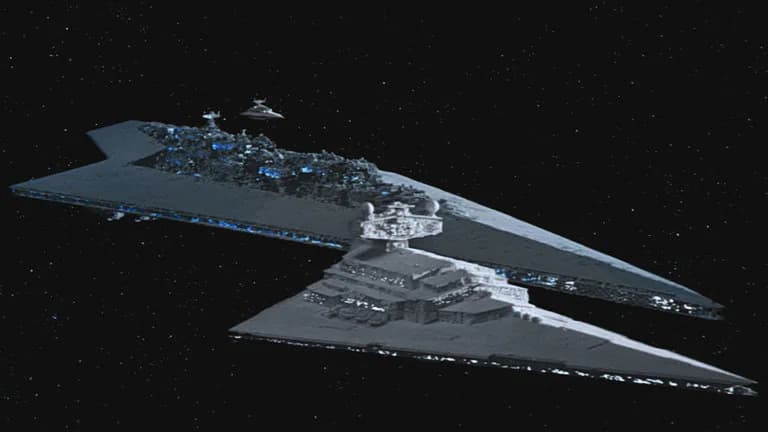
We also see a different set of Star Destroyers in both The Force Awakens and its sequel, The Last Jedi (2017). The audience is introduced to new Star Destroyers that form the ships in the First Order. These ships include Kylo Ren’s Star Destroyer, named the Finalizer, and the Supreme Leader Snoke’s vessel, the Mega-class ship called The Supremacy.
Also, the final part of the sequel trilogy, called The Rise of Skywalker, introduced the audience to a fleet of ships called “Death Star Destroyers”. These Star Destroyers, not surprisingly, look a lot like the Imperial-class designs, not the First Order’s designs.
Now that you understand the different variations in Star Destroyers, we’ll discuss how much it would cost to build a Star Destroyer.
How Much Would It Realistically Cost to Build?
We did mention earlier that the design of a Star Destroyer would probably never realistically work in space. However, let’s ignore that assumption and say that it would, and then try to figure out how much it would cost to build a realistic, functional Star Destroyer. It’s not like these are for sale at your local star-port.
One estimate states that it would cost about $636 billion to build a Star Destroyer using parts we’d find on Earth. In addition to that, it would cost another $44.4 trillion to get the Star Destroyer off of Earth and to Mars. When we look at those astronomical launch cost figures, then we realize why nobody on Earth is building a Star Destroyer. Not only is it overly expensive to make a star destroyer, but there are other technologies that people would, not surprisingly, instead invest in first.
We’ll explain the calculations and our estimate in greater detail below. We first need to assume that when building our Star Destroyer, we are only using current technologies, nothing out of the science-fiction fantasy realm. Also, we’re not making any thick hull protection or using exotic materials. We’re even factoring in the fact that the Star Destroyer will need to get into “proper space,” or get away from the gravity of Earth to function.
Star Destroyer Characteristics: Size, Volume, and Mass
In Star Wars, the Imperial I-Class Star Destroyer we see in that film measures 1600 meters in length. The height and width of the primary pyramid surface area on the ship measures about 220 meters by 900 meters. If you do the calculations, we’ll see 1/3 x (1/2 x 220 x 900) x 1,600 = 1/3 x 99,000 x 1,600 = 52.8 million cubic meters. Compare that to the largest building in the world by volume, the Boeing Everett factory, which is about 13.3 million cubic meters.
So, by that comparison, you can see that creating a Star Destroyer means we’ll have a large item to build. However, it’s not so large that we couldn’t complete it. We wouldn’t run out of raw materials before we finished, so that’s a good sign.
We’ve got a few reference points we want to compare Star Destroyers to so that you’ll get a visual picture of their size compared to a few structures that are already in existence.
- First, we are using the Allure of the Seas, which is the world’s largest cruise liner. It measures 360 meters long and is 60.5 meters at maximum width. The estimate its volume at 360 x 55 x 60 = 1.188 million cubic meters. When we compare that to our earlier figures above that covered the Star Destroyer, we can say the Star Destroyer is about 44.4 times the volume of this cruise ship. So, 44.4 x 100 million gives us 4.44 billion kilograms.
- Next, we want to compare a Star Destroyer to our second point of reference, the Gerald R. Ford-class aircraft carrier we see in the U.S. Navy. This type of aircraft carrier tips the scales close to what the Allure of the Seas weighs, meaning it’s also got a size and volume that’s similar. Inside this aircraft carrier, we find two nuclear reactors that cost $10.44 billion total. Also, each type of ship creates around 3.3 GW of electricity. The entire world created 23.5 million GWh of electrical energy in 2014, which would be enough to power up about 18 Star Destroyers.
Pricing Out A Star Destroyer
Now that we’ve given you a few realistic points of comparison, you’re probably already starting to see that a Star Destroyer will cost an extraordinary amount of money to not only build but also to run. As mentioned earlier, the Imperial Star Destroyer is about 44.4x larger than the $10.44 billion aircraft carriers we discussed above. So, that puts us at least $464 million when we make this command ship.
While you might get something that looks like a Star Destroyer after spending $464 million, you still won’t have everything the ship needs. You’ll need to remember that weapons cost money (about $12 billion on a Star Destroyer), engines also cost cash (about $140 billion), and you’ll also need TIE fighters at about $20 billion. Adding those figures up tells you again how we got our $636 billion price tag.
How many weapons are on a Star Destroyer? Star Destroyers are outfitted with sixty turbo laser turrets and sixty ion cannons. In today’s world, we have something close to this technology called the Athena laser. The Athena laser is priced at $25 million for a demonstrator. Also, each turret would need four lasers, priced at about $100 million per turret. There is no ion cannon nowadays, but we do have laser turrets. We’d need 120 of those, which would cost about $12 million.
Also, what about the TIE fighters, since they’ll also need ion engines? We don’t have technology that’s comparable to the TIE’s quick acceleration. Our best comparison would be Lockheed Martin F-22 Raptor, and those cost about $150 million each. While we understand that airplane dynamics won’t work in space, we are just using these figures for pricing. If you imagine that a Star Destroyer has 72 fighters, you’ll wind up spending about $10.8 billion.
Transferring Items To Space (free shipping not included)
Not only do you need to account on how much it will cost to make a Star Destroyer before you build one, you’ll also have to figure out how much it will cost to transfer the ship to space. It will cost some extra cash to get a capital ship successfully into space, as well.
Let’s take a look at the world’s most affordable and biggest commercial rocket, the Falcon Heavy, created by SpaceX. This rocket can launch towards Mars, which is the same target we are using for our Star Destroyer. To launch the Falcon Heavy to marks, it costs about $135 million, and that’s for a ship that weighs 13,200 kilograms.
Even if we get a discount and pay $10,000 per kilogram, it will cost us about $44.4 trillion by weight to get our Star Destroyer going toward Mars. It will also require 330,000 launches to get all of the pieces of the Star Destroyer in space, which is equivalent to one launch per minute over eight months.
So, while it’s nice to think that somebody someday will build a regular, working Star Destroyer, even with today’s technological innovations, we are not much closer to ever building and launching one.
Final Thoughts
While the concept of a Star Destroyer has bough awe to people and families for generations, it seems likely that, at least for now, the idea of a Star Destroyer will remain that: a mythical spaceship. While we are getting closer and closer to the possibilities of creating a real Star Destroyer someday, currently, the costs and physics of such a project are just not feasible. However, that doesn’t mean some millionaire genius inventor might not come along and make one someday.
Since technology is always improving, it seems likely that, for those of you that want it, we’ll see a Star Destroyer flying around space someday.
If you are interested in the Lego version Star Destroyer, you really need to check out our Lego article here.
Sources:
- https://www.theverge.com/2016/4/7/11383684/rogue-one-star-wars-trailer-theory
- https://www.shutupandsitdown.com/review-armada-wave-two/

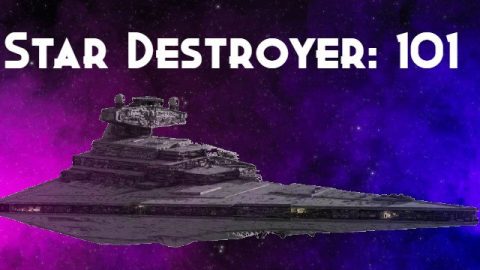
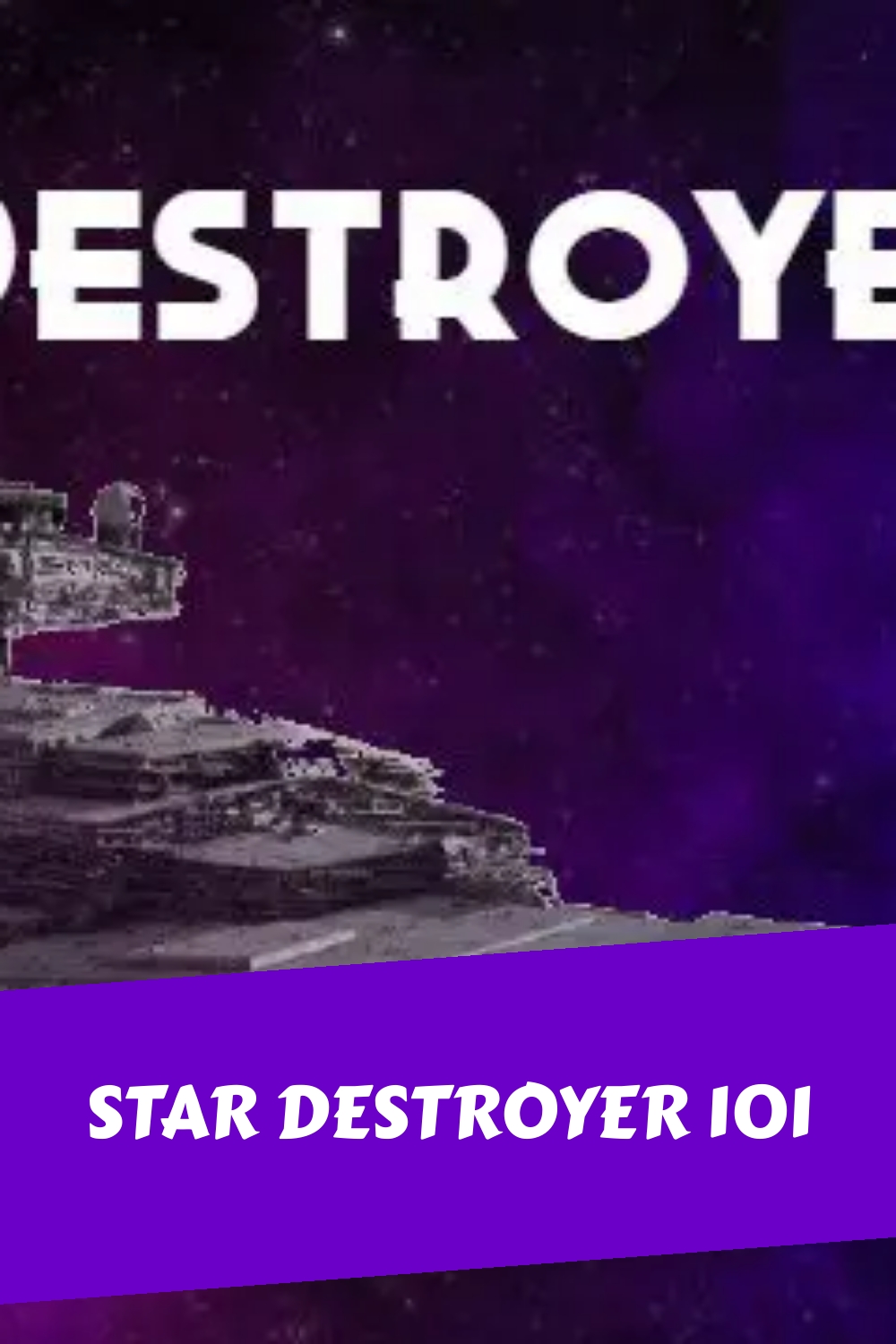



Leave a comment
You must be logged in to post a comment.